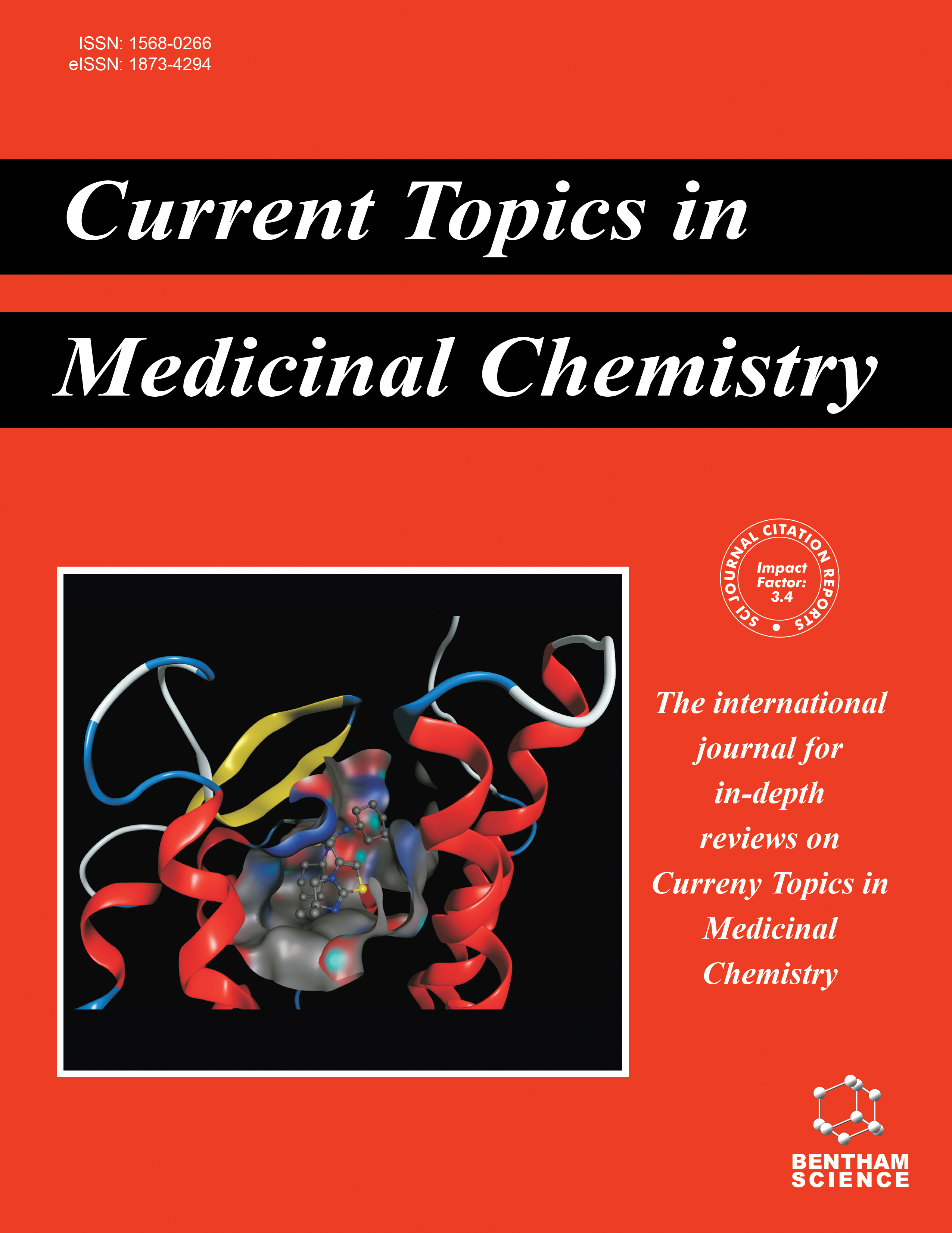- Home
- A-Z Publications
- Current Topics in Medicinal Chemistry
- Previous Issues
- Volume 21, Issue 3, 2021
Current Topics in Medicinal Chemistry - Volume 21, Issue 3, 2021
Volume 21, Issue 3, 2021
-
-
Evidences of G Coupled-Protein Receptor (GPCR) Signaling in the human Malaria Parasite Plasmodium falciparum for Sensing its Microenvironment and the Role of Purinergic Signaling in Malaria Parasites
More LessAuthors: Pedro H.S. Pereira, Lucas Borges-Pereira and Célia R.S. GarciaThe nucleotides were discovered in the early 19th century and a few years later, the role of such molecules in energy metabolism and cell survival was postulated. In 1972, a pioneer work by Burnstock and colleagues suggested that ATP could also work as a neurotransmitter, which was known as the “purinergic hypothesis”. The idea of ATP working as a signaling molecule faced initial resistance until the discovery of the recepto Read More
-
-
-
The Role of Purinergic Signaling in Trichomonas vaginalis Infection
More LessAuthors: Micheli Ferla and Tiana TascaTrichomoniasis, one of the most common non-viral sexually transmitted infections worldwide, is caused by the parasite Trichomonas vaginalis. The pathogen colonizes the human urogenital tract, and the infection is associated with complications such as adverse pregnancy outcomes, cervical cancer, and an increase in HIV transmission. The mechanisms of pathogenicity are multifactorial, and controlling immune responses is e Read More
-
-
-
Unveiling the Potential of Purinergic Signaling in Schistosomiasis Treatment
More LessAuthors: Nathália F. Oliveira and Claudia L. M. SilvaSchistosomiasis is a neglected tropical disease. It is related to long-lasting granulomatous fibrosis and inflammation of target organs, and current sub-optimal pharmacological treatment creates global public health concerns. Intravascular worms and eggs release antigens and extracellular vesicles that target host endothelial cells, modulate the immune system, and stimulate the release of damageassociated molecular patt Read More
-
-
-
The Complexity of Purinergic Signaling During Toxoplasma Infection
More LessAuthors: Aline C. A. Moreira-Souza and Robson Coutinho-SilvaToxoplasmosis is a neglected disease caused by infection by the protozoan Toxoplasma gondii. One-third of the global population is expected to be by infected T. gondii. In Europe and North America, most infections do not induce disease, except in the context of immunosuppression. However, in endemic regions such Central and South America, infections induce severe ocular and potentially lethal disease, even in immunocom Read More
-
-
-
ENTPDases from Pathogenic Trypanosomatids and Purinergic Signaling: Shedding Light towards Biotechnological Applications
More LessAuthors: Walmir da Silva, Nancy da Rocha Torres, Joice de Melo Agripino, Victor H. F. da Silva, Anna Cláudia Alves de Souza, Isadora C. Ribeiro, Tatiana Aparecida de Oliveira, Luciana Angelo de Souza, Lethicia Kelly Ramos Andrade, João Victor Badaró de Moraes, Marcel Arruda Diogo, Raíssa Barbosa de Castro, Marcelo Depolo Polêto, Luis Carlos Crocco Afonso and Juliana Lopes Rangel FiettoENTPDases are enzymes known for hydrolyzing extracellular nucleotides and playing an essential role in controlling the nucleotide signaling via nucleotide/purinergic receptors P2. Moreover, ENTPDases, together with Ecto-5´-nucleotidase activity, affect the adenosine signaling via P1 receptors. These signals control many biological processes, including the immune system. In this context, ATP is considered as a trigger Read More
-
-
-
GPRASP/ARMCX Protein Family: Potential Involvement in Health and Diseases Revealed by their Novel Interacting Partners
More LessAuthors: Juliette Kaeffer, Gabrielle Zeder-Lutz, Frédéric Simonin and Sandra LecatGPRASP (GPCR-associated sorting protein)/ARMCX (ARMadillo repeat-Containing proteins on the X chromosome) family is composed of 10 proteins, whose genes are located on a small locus of the X chromosome except one. They possess at least two armadillo-like repeats on their carboxylterminal homologous sequence, but they can be subdivided on specific sequence features. Subfamily 1 (GPRASP1, GPRASP2, GP Read More
-
Volumes & issues
-
Volume 25 (2025)
-
Volume 24 (2024)
-
Volume 23 (2023)
-
Volume 22 (2022)
-
Volume 21 (2021)
-
Volume 20 (2020)
-
Volume 19 (2019)
-
Volume 18 (2018)
-
Volume 17 (2017)
-
Volume 16 (2016)
-
Volume 15 (2015)
-
Volume 14 (2014)
-
Volume 13 (2013)
-
Volume 12 (2012)
-
Volume 11 (2011)
-
Volume 10 (2010)
-
Volume 9 (2009)
-
Volume 8 (2008)
-
Volume 7 (2007)
-
Volume 6 (2006)
-
Volume 5 (2005)
-
Volume 4 (2004)
-
Volume 3 (2003)
-
Volume 2 (2002)
-
Volume 1 (2001)
Most Read This Month
Article
content/journals/ctmc
Journal
10
5
false
en


